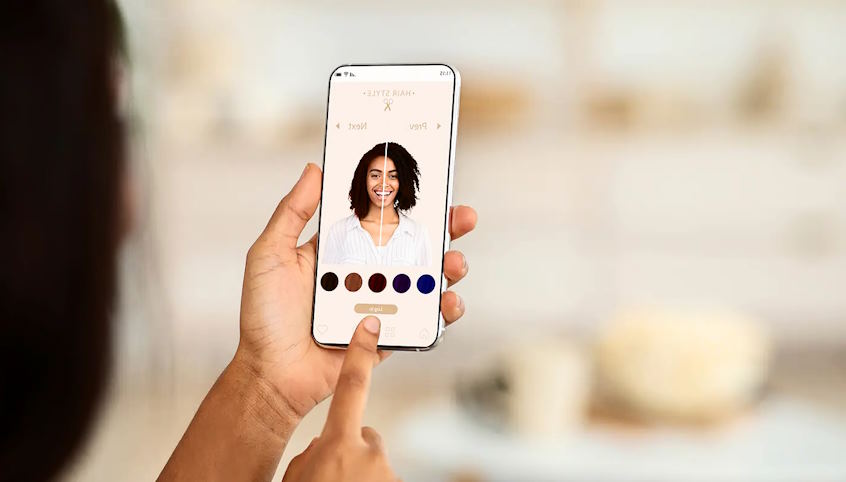
In the digital age, where smartphones and social media dominate our daily lives, the pursuit of beauty has taken on a whole new dimension. With a simple tap on a screen, anyone can transform their appearance through the use of digital enhancements and filters. From flawless skin to sparkling eyes, these alterations can make even the most ordinary photograph appear captivating and surreal. However, the prevalence of digitally enhanced images has sparked a conversation about the impact and implications they have on beauty standards and self-image.
Understanding Digital Enhancements
In today’s visually-driven world, digital enhancements have become ubiquitous in the realm of photography. They offer the ability to transform and perfect images, ultimately shaping our perception of beauty. To comprehend the impact of these enhancements, it is essential to explore the different types of alterations commonly used, the popular tools and apps that facilitate them, and their overall influence on our understanding of beauty.
Filters, retouching, and editing are the primary forms of digital enhancements. Filters, often available on social media platforms, apply predefined visual effects to photos, altering colors, contrast, and tones. They can range from subtle adjustments that enhance the overall aesthetic to dramatic changes that completely transform the image’s mood. Retouching, on the other hand, involves removing imperfections, smoothing skin, and enhancing features to achieve a more flawless appearance. This technique is commonly used in fashion and beauty industries to create idealized representations of individuals. Lastly, editing encompasses a broader range of modifications, including cropping, adjusting exposure, and manipulating composition. It allows photographers and enthusiasts to enhance the overall quality and artistic appeal of their images.
Various photo editing apps and tools have gained immense popularity, making digital enhancements accessible to anyone with a smartphone or computer. Apps like Adobe Photoshop, Lightroom, and Snapseed offer a wide array of editing features, empowering users to alter their photos with ease. Social media platforms like Instagram and Snapchat also provide built-in filters and editing options, making it effortless to enhance and beautify images before sharing them with the world.

The Psychological Effects of Filtered Images
In the era of digital enhancements and filters, the impact of these altered images on our psychological well-being cannot be ignored. Filtered images, with their perfectly smooth skin, striking features, and flawless aesthetics, can have significant psychological effects, shaping our perception of beauty and triggering a range of negative emotions. Understanding these effects is crucial for developing a healthier relationship with filtered images and nurturing a positive self-image.
One of the prominent psychological effects of filtered images is the reinforcement of perfectionism and the promotion of unrealistic beauty expectations. When we are bombarded with images that have been heavily edited and filtered, we may begin to internalize these altered standards of beauty as the norm. As a result, we develop unrealistic expectations for our own appearance, constantly striving for flawlessness and perfection, which can be unattainable and detrimental to our mental well-being.
Filtered images also contribute to body dissatisfaction and self-esteem issues. When we compare our unfiltered selves to the highly edited and idealized versions presented online, we may feel inadequate and dissatisfied with our own bodies. This dissatisfaction can lead to negative body image and a diminished sense of self-esteem, as we constantly compare ourselves to the unattainable beauty standards perpetuated by filtered images.

The Ethical Dilemma
In the world of digital enhancements and filtered images, an ethical dilemma arises between the pursuit of authenticity and the propagation of idealized portrayals. As we encounter countless images that have been meticulously altered to present an unattainable standard of beauty, it becomes crucial to explore the ethical implications of these practices and seek ways to promote self-acceptance and diversity.
At the heart of the ethical dilemma lies the tension between authenticity and idealized portrayals. Filtered images often present an unrealistic and perfected version of individuals, contributing to a culture of comparison and perpetuating narrow beauty standards. This raises questions about the authenticity of these images and the impact they have on our perception of ourselves and others. Striving for authenticity means embracing our imperfections and celebrating the beauty in diversity, challenging the notion that only flawlessness is desirable or worthy of recognition.
Promoting self-acceptance and diversity becomes an essential component in navigating the ethical landscape of filtered images. By fostering a culture that values individuality and appreciates diverse beauty, we can counteract the harmful effects of unrealistic standards. Embracing our unique features, bodies, and identities encourages a more inclusive and compassionate approach towards ourselves and others.


